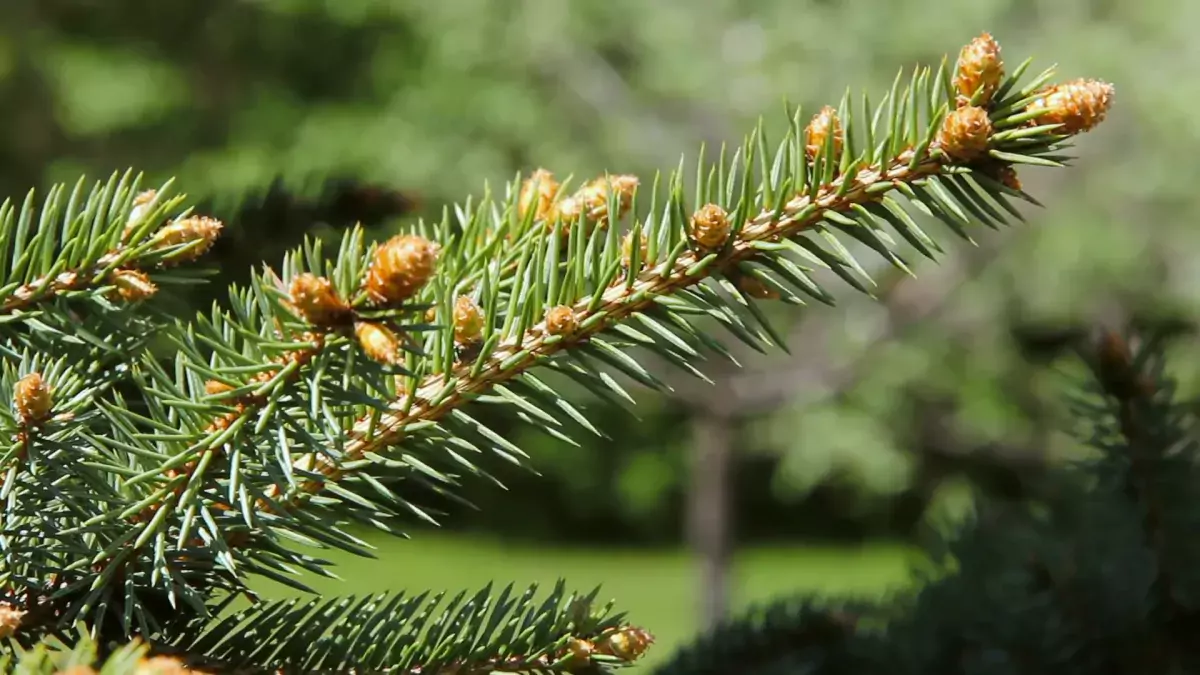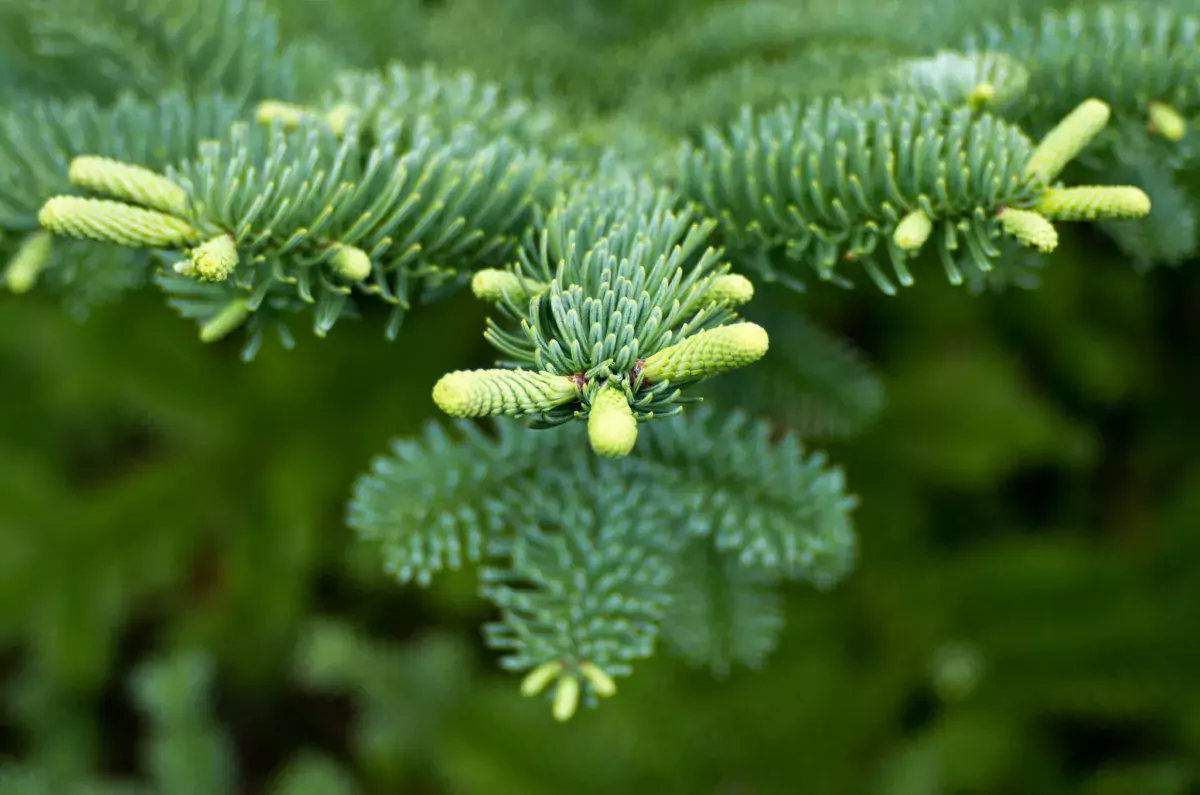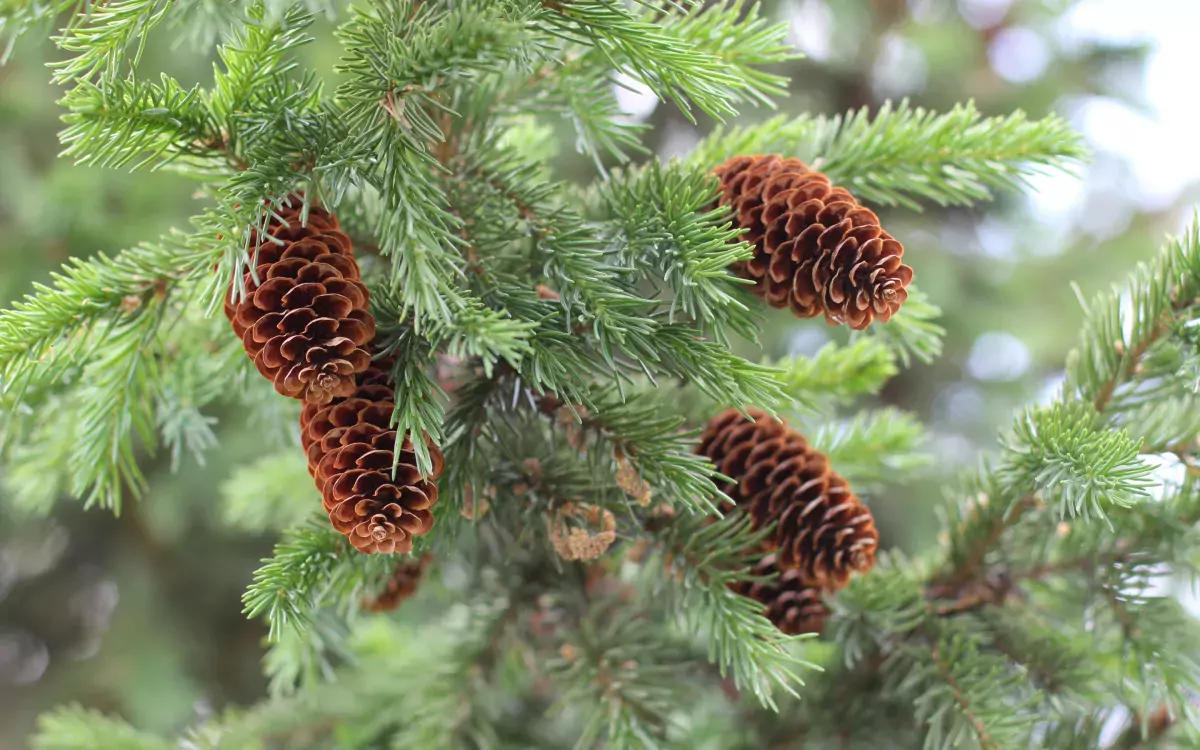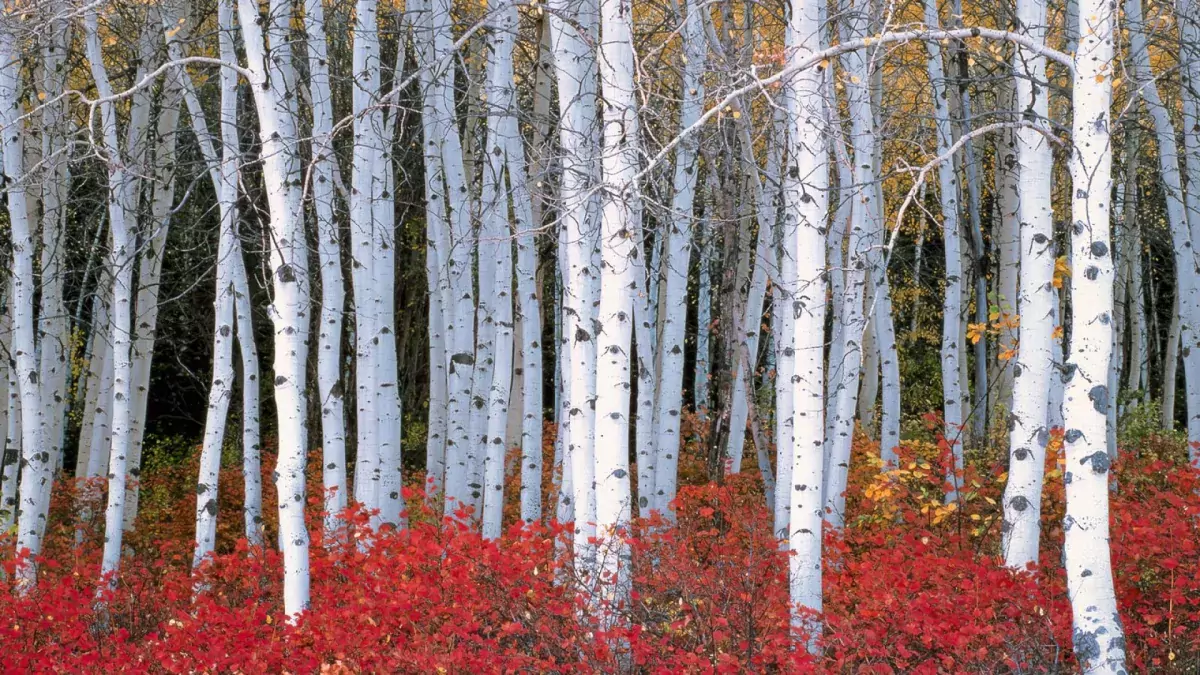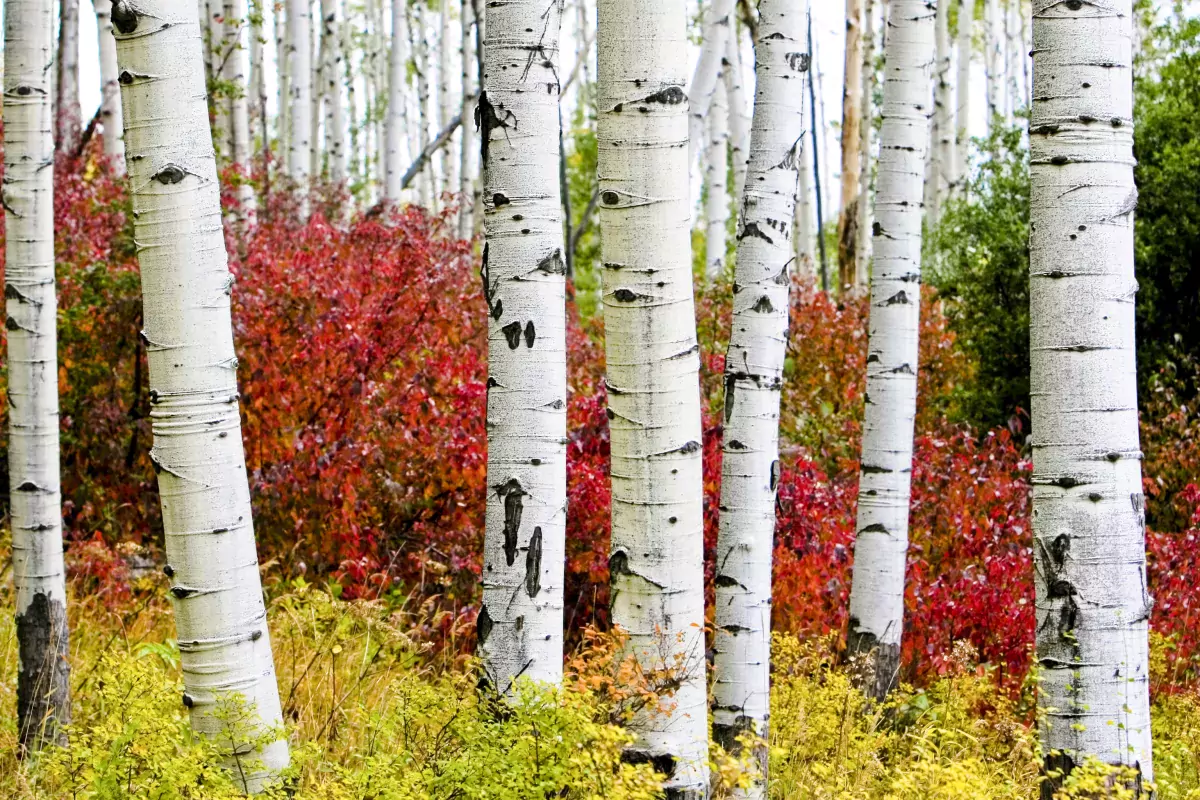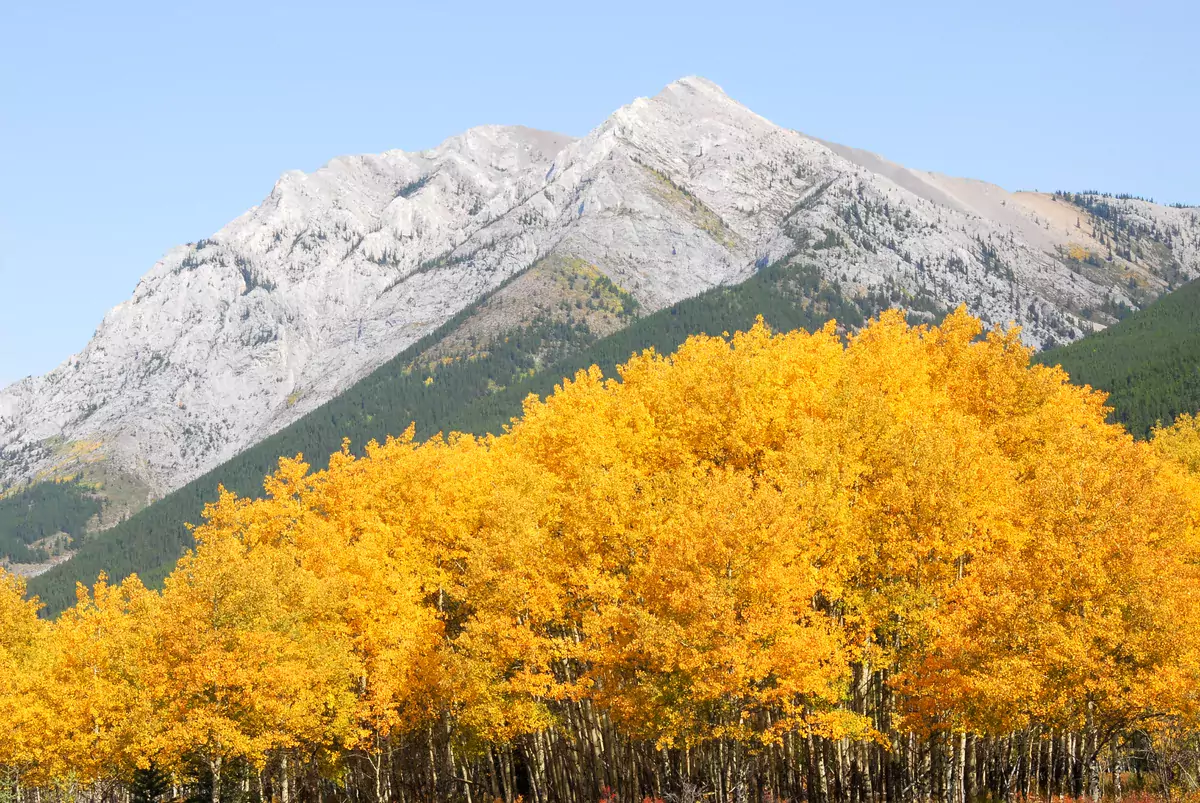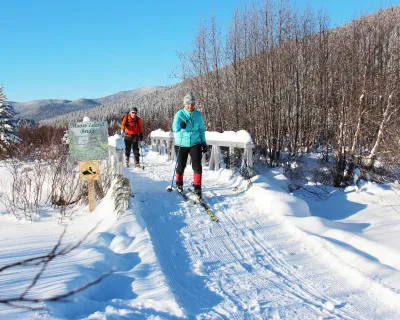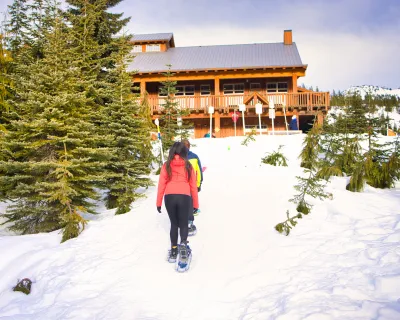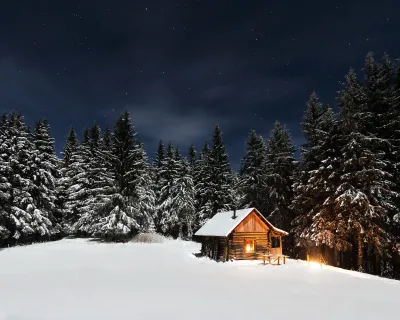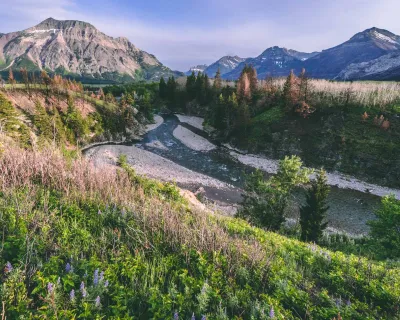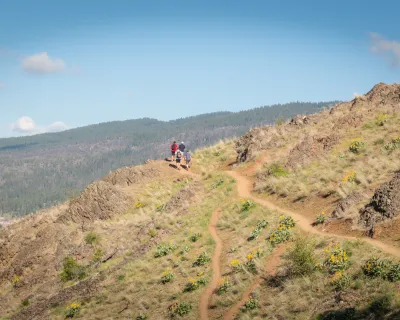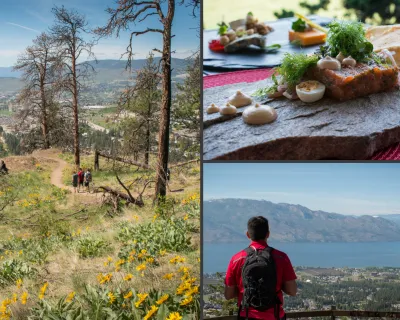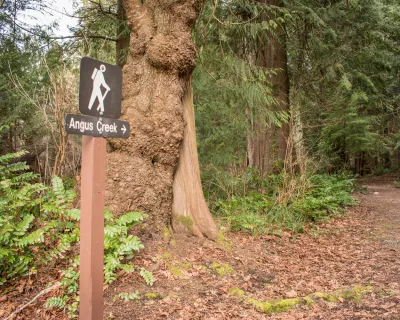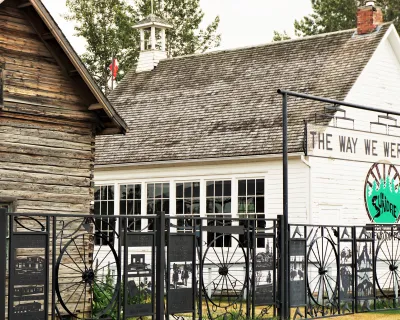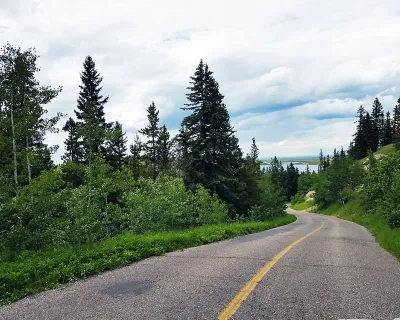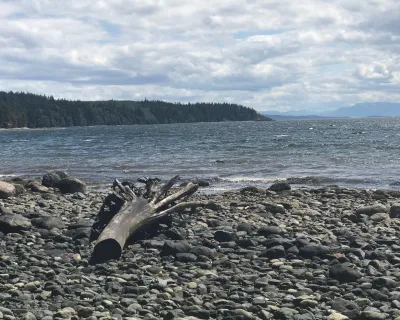Tell the difference between pine, spruce and fir
Is it a fir? Or is it a spruce? Maybe it’s a pine. Maybe we’ll just keep walking and admire the shrubs instead. I don’t know about you, but calling all trees with spikey green needles a Christmas tree doesn’t cut it.
Let’s take a quick look at five tree species: spruce, pine, fir, birch and aspen. By the time we are done, you will know the difference between three coniferous and two deciduous trees that are confused by many a hiker. As a bonus, we'll touch on the ever popular larch as well!
Coniferous Trees: ever. green.
So, what’s a conifer? Those are the “evergreen” trees that don’t lose their skinny pointy green leaves seasonally like the deciduous (except for larch but more on that later) and most importantly have cones as seed pods.
Spruce trees have individual needles that are stiff and pointy with sharp edges. The needles easily roll between your finger tips. Spruce needles are spiny and sharp (think "SSS"). Cones hang down from the branches.
Fir tree needles also grow individually on the branch but the needles are soft and flat and don’t roll between your fingertips. Fir needles are flat and fat (think FFF). Fir cones stand on top of the branch.
Pine tree needles grow in clusters of 2, 3 or 5 needles depending on if they are red, yellow or white pines and, the needles can grow very long (Think of a Scotch Pine at Christmas).
As you walk along the path, pick up a cone and take a look. If it has little three-pointed bract that protrude from each scale, it’s a female Douglas fir cone. Some think the tiny leaf looks like the hind legs and tail of a mouse. And for good reason!
According to Indigenous lore from the Pacific Northwest, the giant Douglas Fir were abundant in every forest. On one particular day, all the animals were fleeing from a fire. But the tiny mice were too small and slow to outrun the fire.
Get outdoors, get more connected, get more Zen.
Sign up for ZenSeekers enews for more transformative travel inspiration.
Knowing the Douglas fir trees have thick bark to withstand fire, they asked the trees for help. The trees allowed them to climb their trunks and hide in the cones. The mice gladly took shelter inside the cones and survived the fire.
Go hiking and test your new tree skills!
Today, if you look closely at the cone of a Douglas fir, it looks like little hind feet and a tail sticking out from under the scales.
Deciduous Trees: seasonal showy trees
Over to the deciduous trees. Deciduous means “falling off at maturity.” I used to remember that they were the trees that “decide” to lose their leaves in the fall – hence deciduous. (My teachers are smacking their heads right now!)
Birch and Aspen are both deciduous trees with white bark and green small leaves. Okay… that doesn’t help. Aspen are in the Populus family while Birch are Betula. Not helping, am I?
Birch trees will have horizontal lines in the white to grey coloured bark and tends to peel and curl. The leaves have jagged edges.
Aspen tree bark is white with a green hint. It is smooth with dark spots for knots and doesn’t peel like the birch. Trembling aspen grow in families and the smooth rounded leaves tremble in even the slightest breeze. In the fall, you can tell an aspen stand that suckered from the same parent, they all change colour at the same time.
Find zen in the forest
Read about how a new mindful practice like forest breathing can increase your peace.
If you rub either tree you’ll get a white film on your hands that is supposed to be a good sunblock (spf 5) but it needs to be reapplied constantly. Better to keep your own tube of store-bought block handy instead.
The Larch – dances to its own drum
So where do larch trees fit in? Tamarack or larch are those glorious coniferous pine looking trees that turn golden in the autumn and drop their needles.
During the winter they look rather naked but new deciduous growth comes in the spring. Yes, I just used coniferous and deciduous to describe the same tree. Cool huh?
According to a little Indigenous lore, it's Mother Nature who was teaching tamarack a lesson that causes the annual loss of needles. Birds flying south needed a resting place out of the storm and asked the tamarack to house them.
The tamarack said the birds were too noisy and would disturb them as they slept through winter. Mother Nature watched the encounter and decided the tamarack needed a lesson so she forced them to lose their winter coat to learn how hard it is to weather a winter without a winter coat.
Now you are ready for your next hike. Just remember your three S’s for spruce, 3 F’s for fir and the bark on a birch peels. And if you don’t remember it all, impress your hiking buddies with some new lore.
Get hiking and test yourself
You know the tricks to tree identification, now go out and test your knowledge.
Like Our Facebook Page

